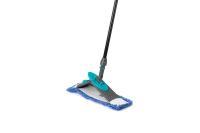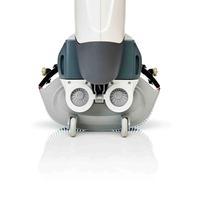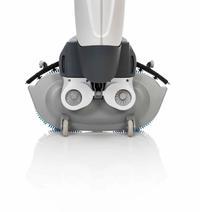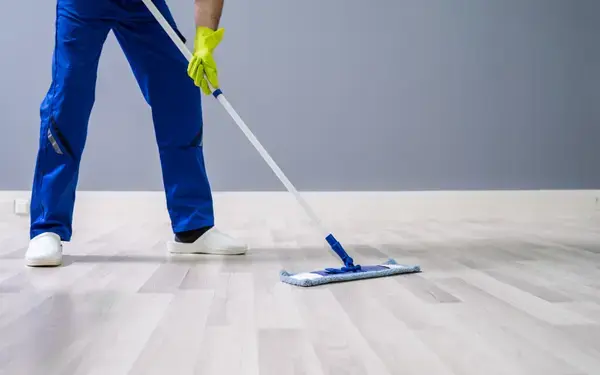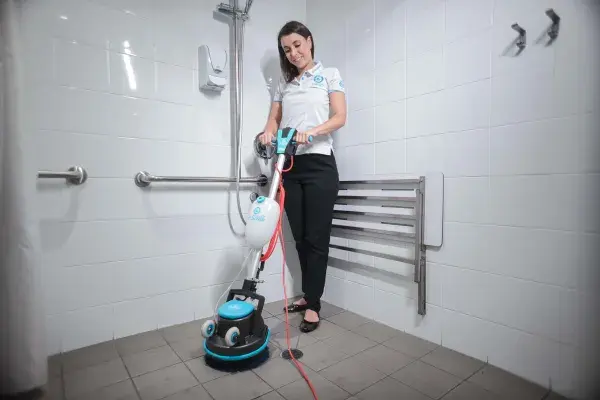You are reading: Understanding How to Choose the Right Microfibre Cleaning System
29 January 2023
9min read time
Brooke Payne
Understanding How to Choose the Right Microfibre Cleaning System
Share:

Key Insights
- A Microfibre Cleaning System includes a range of tools such as mops, cloths, frames and handles and other specialised tools for cleaning walls, baseboards and dusting
- Microfiber cleaning cloths are made from a blend of polyester and polyamide (nylon) fibers that are much finer than those used in traditional cleaning cloths
- High quality material, pocket systems and pre-treatment systems are all important things to consider while researching
Upgrading your traditional mops and cloths to a microfibre cleaning system is a great way to improve the cleanliness of your environment. Microfibre is a modern, efficient andcost-effectivesolution. It is also extremely absorbent and can lift far more soiling thana traditional mop or cloth.
What is a Microfibre Cleaning System?
A microfibre cleaning systemis a series of microfibre products designed to work together to create an all-in-one cleaning package. It typically will include a range of tools such:
Microfibre mops - Microfiber mops are cleaning tools that use microfiber material for its mop head. It is primarily used for cleaning floors, but can also be used to clean other surfaces such as countertops and walls
Microfibre cloths - Microfiber cloths are often used for cleaning surfaces such as countertops, windows, mirrors, and even cars. They are known for being highly absorbent, durable, and effective at removing dirt and bacteria.
Microfibre mop heads - A microfiber mop head is the cleaning pad or attachment that attaches to the handle of a microfiber mop. The microfiber mop head is highly absorbent and effective at trapping dirt, dust, and other particles. It can be used to clean floors and other surfaces such as countertops and walls.
Mircofibre frames and handles - Microfiber frames and handles refer to the structural components of a microfiber mop or cleaning tool. The frame is the structure that holds the mop head in place, while the handle is the part of the mop or tool that is held by the user.
Pliable frames for walls or baseboards - Pliable frames for walls or baseboards refers to a feature of some microfiber mops or cleaning tools that allows them to bend or flex to adapt to the shape of the surface being cleaned. These frames are designed to be more flexible and pliable than traditional mop frames, which are often rigid and straight.
Specialized tools for dusting – These are tools that are specifically designed for the task of removing dust and other particulate matter from surfaces.
This system of microfiber tools allows for efficient cleaning on not only floors, but nearly every surface in both households and offices. Microfibre dusting tools are useful for cleaning delicate surfaces, such as blinds, ceiling fans, and other hard-to-reach areas.
Why is Microfibre cloths better than traditional cleaning cloths?
Microfiber cleaning cloths are made from a blend of polyester and polyamide (nylon) fibers that are much finer than those used in traditional cleaning cloths. This gives them a larger overall surface area, which allows them to pick up more dirt and dust, as well as retain more liquid. The very fine fibers also allow microfibre cloths to into the very small pores and grooves on a surface and remove dirt that a traditional cloth will not. Additionally, microfiber cloths can be laundered and reused multiple times, making them more eco-friendly than disposable cleaning products.

What to look for in your Microfibre Cleaning System:
When choosing a microfibre cleaning system or mop the most important things to look for include:
- High-Quality Manufacturing and Materials
Purchasing high quality microfibre clots or mops will ensure that they do not need to be continually replaced over time, saving you money in the long run. While it might be tempting to opt for a set of cheap microfibre cloths, these will need to be replaced far quicker than a quality microfibre system.Some brands feature smart design technology such as fabric designs that split the microfibre numerous times for even finer fibres, and double stitching to improve longevity
- Pocket system or Velcro mop heads?
The Pocket System is used as an alternative to Velcro to attach to the microfibre pad to the mop frame. The mop frame slips into two pockets on the back of the mop pad and then locks in place.
Velcro systems have velcro backing on the mop heads which connect it to the mopping frame. A challenge with velcro backed mops is that velcro will deteriorate and loose grip over time meaning mops will need to be replaced more regularly (often before the microfibre has worn out.)
- Interchangeable cleaning tools
Ensure that your preferred system can be used on multiple surfaces like walls, curved surfaces and for high level dusting and cleaning. Ask what options areavailable for frames, handles and pads.
- Pre-Treatment system
Pre-treatment systems are a great way to thoroughly clean and sterilise efficiently using your microfibre mop. This can be done by filling your bucket with water and solution, then soaking your microfibre mop pad with the product before use. Microfibre kits which include a pre-treatment system ensure a more even chemical distribution which in return provide a more effective clean.
- Colour-Coding System to Improve HACCP Obligations
Colour-coding systems are a great way to keep track of which cloths and mops belong to different areas, helping prevent cross contamination.While most microfibre brands are colour coded, check the completeness of the coding; For examplesome systems just have tags on the mop heads which you cut off to denote the colour, or coloured stitching on a white mop, while others the entire head is fully colour coded.
- Manufacturer Wash Guarantee
Consider whether your microfibre mopping system comes with a manufacturer wash guarantee. You normally get what you pay for!
Read: How to choose the right floor scrubber for an industrial workshop?
To learn about our revolutionary microfibre mopping system i-fibre (which ticks all the above boxes and more) and how it can improve your cleaning results, click here .
Common Questions Answered
1. What factors should be considered when choosing a microfiber cleaning system?
Answer: The key factors include the type of surface being cleaned, the cleaning frequency, and the specific cleaning tasks (e.g., dusting, mopping, scrubbing). Additionally, ensure that the microfiber system is compatible with the cleaning solutions you're using and that it has durable construction for repeated use.
2. What makes microfiber better than traditional cleaning cloths?
Answer: Microfiber is more effective at trapping dust, dirt, and bacteria due to its ultra-fine fibers, which are much smaller than those found in traditional cloths. This results in better cleaning performance with less effort, often requiring little or no cleaning chemicals.
3. How do you maintain microfiber cleaning tools for long-term use?
Answer: Microfiber cloths and mops should be washed after each use in warm water with mild detergent, avoiding bleach or fabric softeners, which can damage the fibers. Air drying or tumble drying on low heat will help preserve their effectiveness.
References
CleanLink – Choosing the Right Microfiber Cleaning Tools
URL: www.google.com.au
Products Featured Inside this Article
Media and Insights
Join the movement that's changing what clean means.
Be part of a cleaner world. Get a live demo at a time that suits you.
Book a Demo